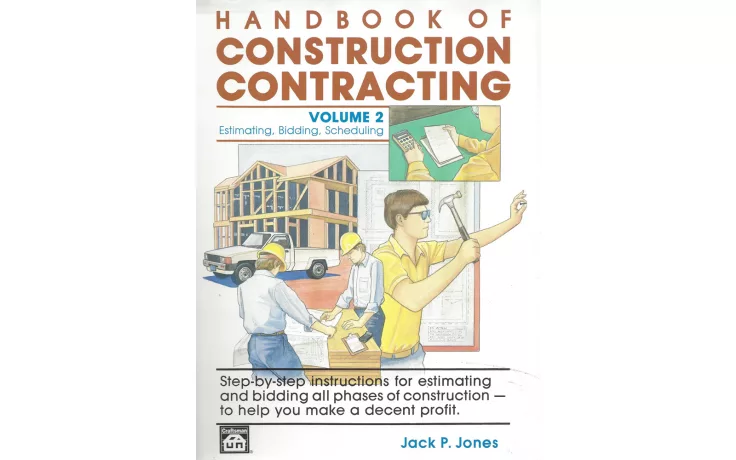Regulations, Executive Orders and Court Rulings: Part 2—What Employers Need to Know Now

Editor's Note: This is the second of a two-part series exploring how recent executive orders and court rulings could impact how roofing contractors operate their businesses.
Election years often bring a flurry of legislative and regulatory activity that could significantly impact employers. And, as we mentioned in the first part of this two-part series, this election cycle is no different, as Pres. Barack Obama prepares to exit office and Republicans gear up to try to take control of the White House while maintaining control of Congress.
In the first part, we looked at upcoming regulatory changes that will definitely affect many organizations. Here, we look at court rulings and state laws that promise more expenses, paperwork, and headaches for many more companies.
Increases in the Minimum Wage
Although the current federal minimum wage is $7.25 per hour, more than half the states and Washington, D.C., require employers to pay a higher hourly pay rate. In some states, those minimum wages are nearly double the federal rate. And when states and local governments have higher rates, the higher rate prevails.
For example, earlier this year California and New York both set their minimum wages to reach $15 per hour over the next several years. In California, the state’s hourly minimum wage will rise to $15 by 2022 for companies with more than 25 employees, and by 2023 for smaller businesses.
In New York, the wage increase will start in 2019 in New York City for companies with at least 11 workers, and the following year for other companies. Businesses in the suburbs will have to start paying $15 an hour by 2022; in upstate New York, the hourly minimum wage will increase to $12.50 in five years, and then continue increasing until it reaches $15.
With millions of workers in California and New York, these states’ increases will obviously affect many employers. According to the “Wall Street Journal,” 53.6 million U.S. workers received less than $15 an hour in 2015.
However, not every state has bought into the idea that a rising minimum wage will help the economy. North Carolina recently passed a law that limits how local governments across the state can raise the minimum wage. Similarly, after the Birmingham City Council raised the city’s minimum wage to $10.10, in February, Alabama lawmakers passed a law to ban local governments from establishing local minimum wages.
Equal Pay Enforcement
Along with minimum wage laws, states have also been developing or expanding upon their own equal pay laws. On Jan. 1, California’s Fair Pay Act took effect. Under the new law, employers have a far greater burden to prove that their pay practices aren’t discriminatory. New York has passed a similar law. And state contractors in Delaware must pay their employees equally.
Along with state laws, employers can also face pay discrimination claims under laws such as the Equal Pay Act of 1963, Title VII of the Civil Rights Act of 1964, the Age Discrimination in Employment Act of 1967, the Lilly Ledbetter Fair Pay Act of 2009, and Title I of the Americans with Disabilities Act of 1990. According to the U.S. Equal Employment Opportunity Commission (“EEOC”), “The law against compensation discrimination includes all payments made to or on behalf of employees as remuneration for employment. All forms of compensation are covered, including salary, overtime pay, bonuses, stock options, profit sharing and bonus plans, life insurance, vacation and holiday pay, cleaning or gasoline allowances, hotel accommodations, reimbursement for travel expenses, and benefits.”
Union Issues
The U.S. Supreme Court always been an unknown factor when it comes to deciding cases involving unions, but the situation has only grown more uncertain with the death of Justice Antonin Scalia and gridlock in Washington that has left the nation’s highest court with only eight justices. That gridlock was on clear display in a recent ruling for California Teachers Association that handed a major victory to public-sector labor unions.
When the case was argued in January, many observers thought Scalia would stand with the majority and find that forcing public workers to financially support unions they refused to join violated their First Amendment rights. However, with Scalia’s death, the court deadlocked 4-4. That meant that the ruling from the U.S. Court of Appeals for the Ninth Circuit upholding the fee collections remained in effect.
Beyond California, a ruling against the union could have had an impact in 23 states, where teachers and other government workers are required to contribute to unions they don’t support.
The teachers who brought the case have asked the court to rehear their case once a ninth justice has been confirmed—although the result of that case will likely depend on who wins control of the White House in the fall, and whether a liberal or conservative justice ultimately joins the Supreme Court.
In July 2016, the National Labor Relations Board (NLRB) issued another significant decision. In part one of this two-part series, we discussed the NLRB’s recent activity in cases involving Browning-Ferris Industries and McDonald’s, and we talked about how the NLRB has loosened considerably the amount of control a company must exercise over a worker before that company will be deemed a joint employer for labor law purposes. Since then, the NLRB has expanded upon its precedent. In a case involving Miller & Anderson, Inc., the NLRB overruled its own prior case law and found that an employer and a staffing company need not consent before an election covering temporary workers and regular employees can take place. This decision expands upon the NLRB’s recent joint employer rulings, and opens the door even further for organizing of a company’s temporary workforce.
The Push to “Ban the Box”
Over the past several years, there has been a push by many advocates to “ban the box,” meaning preclude employers from asking applicants whether they have ever been convicted of a crime. The EEOC previously issued guidance on the use of criminal history information and has even filed several high-profile lawsuits alleging violations of anti-discrimination law based on application questions. Several states and cities have issued regulations banning such questions, at least until after a job offer has been made. For example, in March 2016, Austin, Texas amended the city code to preclude private employers from asking applicants questions pertaining to their criminal history. Employers should be aware of any such rules in their area, whether state-wide or via local ordinance, and should tailor their hiring process accordingly.
In the current regulatory, legislative and legal environment, employers need to understand how they could be impacted by all the changes in the regulatory landscape. By working with trusted experts, including outside counsel, companies can minimize their exposure, risk, and expenses.
In the first part, we looked at upcoming regulatory changes that will definitely affect many organizations. Here, we look at court rulings and state laws that promise more expenses, paperwork, and headaches for many more companies.
• Increases in the minimum wage
Although the current federal minimum wage is $7.25 per hour, more than half the states and Washington, D.C., require employers to pay a higher hourly pay rate. In some states, those minimum wages are nearly double the federal rate. And when states and local governments have higher rates, the higher rate prevails.
For example, earlier this year California and New York both set their minimum wages to reach $15 per hour over the next several years. In California, the state’s hourly minimum wage will rise to $15 by 2022 for companies with more than 25 employees, and by 2023 for smaller businesses.
In New York, the wage increase will start in 2019 in New York City for companies with at least 11 workers, and the following year for other companies. Businesses in the suburbs will have to start paying $15 an hour by 2022; in upstate New York, the hourly minimum wage will increase to $12.50 in five years, and then continue increasing until it reaches $15.
With millions of workers in California and New York, these states’ increases will obviously affect many employers. According to the “Wall Street Journal,” 53.6 million U.S. workers received less than $15 an hour in 2015.
However, not every state has bought into the idea that a rising minimum wage will help the economy. North Carolina recently passed a law that limits how local governments across the state can raise the minimum wage. Similarly, after the Birmingham City Council raised the city’s minimum wage to $10.10, in February, Alabama lawmakers passed a law to ban local governments from establishing local minimum wages.
• Equal pay enforcement
Along with minimum wage laws, states have also been developing or expanding upon their own equal pay laws. On Jan. 1, California’s Fair Pay Act took effect. Under the new law, employers have a far greater burden to prove that their pay practices aren’t discriminatory. New York has passed a similar law. And state contractors in Delaware must pay their employees equally.
Along with state laws, employers can also face pay discrimination claims under laws such as the Equal Pay Act of 1963, Title VII of the Civil Rights Act of 1964, the Age Discrimination in Employment Act of 1967, the Lilly Ledbetter Fair Pay Act of 2009, and Title I of the Americans with Disabilities Act of 1990. According to the U.S. Equal Employment Opportunity Commission (“EEOC”), “The law against compensation discrimination includes all payments made to or on behalf of employees as remuneration for employment. All forms of compensation are covered, including salary, overtime pay, bonuses, stock options, profit sharing and bonus plans, life insurance, vacation and holiday pay, cleaning or gasoline allowances, hotel accommodations, reimbursement for travel expenses, and benefits.”
• Union issues
The U.S. Supreme Court always been an unknown factor when it comes to deciding cases involving unions, but the situation has only grown more uncertain with the death of Justice Antonin Scalia and gridlock in Washington that has left the nation’s highest court with only eight justices. That gridlock was on clear display in a recent ruling for California Teachers Association that handed a major victory to public-sector labor unions.
When the case was argued in January, many observers thought Scalia would stand with the majority and find that forcing public workers to financially support unions they refused to join violated their First Amendment rights. However, with Scalia’s death, the court deadlocked 4-4. That meant that the ruling from the U.S. Court of Appeals for the Ninth Circuit upholding the fee collections remained in effect.
Beyond California, a ruling against the union could have had an impact in 23 states, where teachers and other government workers are required to contribute to unions they don’t support.
The teachers who brought the case have asked the court to rehear their case once a ninth justice has been confirmed—although the result of that case will likely depend on who wins control of the White House in the fall, and whether a liberal or conservative justice ultimately joins the Supreme Court.
In July 2016, the National Labor Relations Board (“NLRB”) issued another significant decision. In part one of this two-part series, we discussed the NLRB’s recent activity in cases involving Browning-Ferris Industries and McDonald’s, and we talked about how the NLRB has loosened considerably the amount of control a company must exercise over a worker before that company will be deemed a joint employer for labor law purposes. Since then, the NLRB has expanded upon its precedent. In a case involving Miller & Anderson, Inc., the NLRB overruled its own prior case law and found that an employer and a staffing company need not consent before an election covering temporary workers and regular employees can take place. This decision expands upon the NLRB’s recent joint employer rulings, and opens the door even further for organizing of a company’s temporary workforce.
• The push to “ban the box”
Over the past several years, there has been a push by many advocates to “ban the box,” meaning preclude employers from asking applicants whether they have ever been convicted of a crime. The EEOC previously issued guidance on the use of criminal history information and has even filed several high-profile lawsuits alleging violations of anti-discrimination law based on application questions. Several states and cities have issued regulations banning such questions, at least until after a job offer has been made. For example, in March 2016, Austin, Texas amended the city code to preclude private employers from asking applicants questions pertaining to their criminal history. Employers should be aware of any such rules in their area, whether state-wide or via local ordinance, and should tailor their hiring process accordingly.
In the current regulatory, legislative and legal environment, employers need to understand how they could be impacted by all the changes in the regulatory landscape. By working with trusted experts, including outside counsel, companies can minimize their exposure, risk, and expenses.
-30-
Richard D. Alaniz is senior partner at Alaniz Schraeder Linker Farris Mayes, L.L.P., a national labor and employment firm based in Houston. He has been at the forefront of labor and employment law for over thirty years, including stints with the U.S. Department of Labor and the National Labor Relations Board. Rick is a prolific writer on labor and employment law and conducts frequent seminars to client companies and trade associations across the country. Questions about this article, or requests to subscribe to receive Rick’s monthly articles, can be addressed to Rick at (281) 833-2200 or ralaniz@alaniz-schraeder.com.
Looking for a reprint of this article?
From high-res PDFs to custom plaques, order your copy today!







